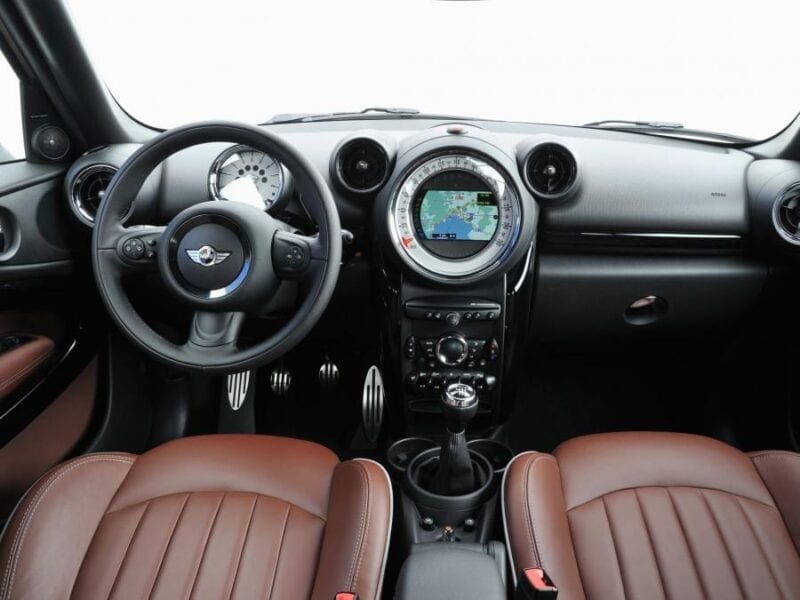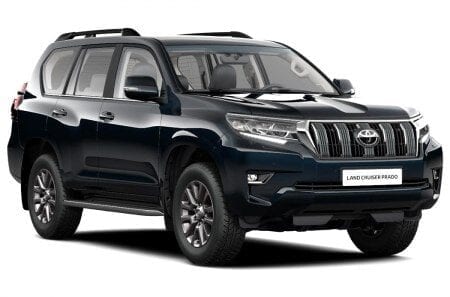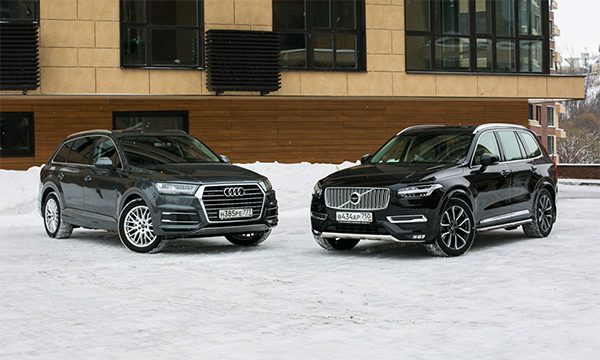
Test drive Volvo XC90 and Audi Q7
I am driving a Volvo XC90, but I do not touch either the steering wheel or the pedals, occasionally glancing at my neighbors downstream. Look, the car goes by itself!
The smartphone is in my left hand, while the right is leafing through the Facebook feed Sleepy morning traffic slowly creeps from traffic light to traffic light, and I crawl along with it to the subtle accompaniment of a muttering diesel engine. I am driving a Volvo XC90, but I do not touch either the steering wheel or the pedals, occasionally glancing at my neighbors downstream. Look, the car goes by itself! Let not for long, albeit demanding to periodically touch the steering wheel, but by herself. Be sure to click a selfie, but it's better to make a short video and upload it immediately. Isn't this my finest hour?
Or, let's say, like this: display the news feed on the screen of the Audi Q7 media system, then see the weather, and then specify the time of tomorrow's flight from Sheremetyevo. Then fill in the address of the tax office in the navigator, which is just on the way to the office, and better examine the location on Google satellite images for the presence of parking lots. I am too businesslike to waste time, and even in a traffic jam I am able, if not to work, then at least to receive the information I need. With quick movements, I rotate the washer of the media system, go to the touch panel and enter the desired address without looking up from the road. Unsuccessful? Then another time. The drivers of the neighboring cars still can't see what I wrote there blindly with my finger.
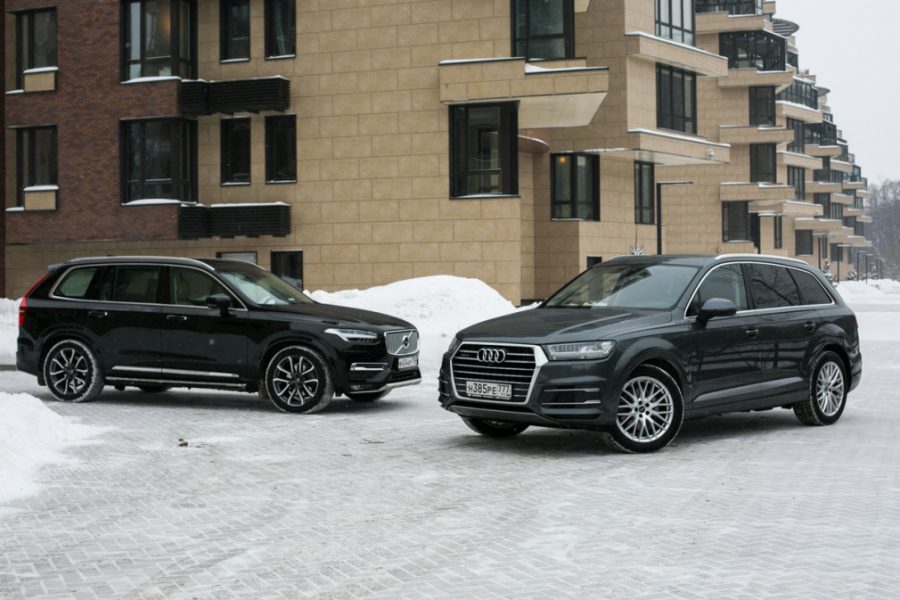
The largest of Audi's crossovers obstinately combes the traffic and enjoys well-deserved respect on the road, but is not at all perceived as an elephant in a china shop. If the Q7 of the first generation seemed bulky and heavy, then the current car has found a light and chiseled elegant figure with a solid hexagonal radiator grille. The dimensions really have become a little smaller, but the main thing is that the profile of the crossover has become lighter, as if it were not a crossover at all, but a raised Audi A6 station wagon. However, in performance characteristics, everything is in place - a five-meter body, a three-meter wheelbase, and a spacious seven-seater salon.
The Audi Q7 reigns supreme until the new Volvo XC90 arrives. This is a real show stopper among crossovers, especially at dusk, when the headlights are brightly lit with LEDs of the "Thor's hammer". It is not easy to recognize the heir to the former XC90, which has been produced for 13 years, but the general stylistic details can be found easily. For example, zigzagged lights or a not so clear, but still clear line of the window sill, which runs along the entire body. The new XC90 has become not only more solid - it is visually larger, stronger and more brutal than the previous one. The concept of soft style has changed dramatically - if earlier we just knew that Volvo cars are safe, now the XC90 seems simply unapproachable, and the owner likes this feeling. Compared to Audi, this Volvo seems much larger, although the dimensions suggest otherwise. But the fact that the new XC90 is entering the segment of large premium crossovers as an equal is beyond doubt.
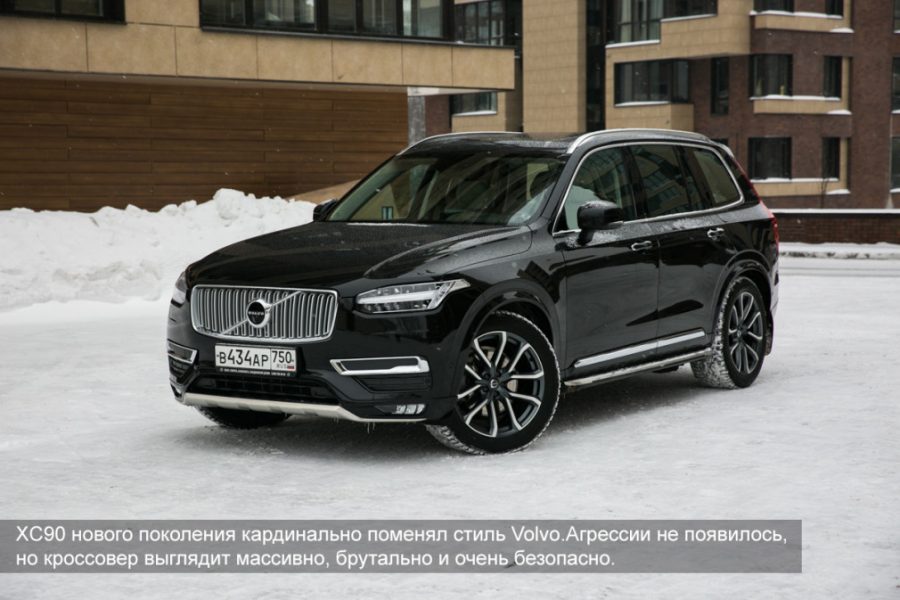
Inside the bright and airy Volvo cabin, you want to put on your slippers right away. Thick glass insulates from the outside world, the $ 2 Bowers & Wilkins sound system is soft bass. The front seats are completely unsportsmanlike, but you don't want to get out of them. Among a dozen of electric drives, there are those that will correct the length of the pillow and the hugs of the side bolsters. It is certainly expensive here, but what is most striking in the XC669 cabin is not the quality and not the selection of materials. Here coziness and visual safety, which, it seems, can be touched by hands, are combined with absolute hi-tech: strict lines, elegant chrome, large displays - and no clutter of buttons and levers. For a smartphone user, everything is familiar here: the menu screens can be flipped with finger movements, the navigator map can be scaled with tweaks.
The notorious lens on the gear selector lever is not in our configuration, but the existing one seems quite exquisite. Next to it is an elegant rotary engine start handle and a textured "twist" for selecting driving modes. On the console there is a line of media keys with buttons for turning on the heated glass. And nothing more. The revived devices and the turned on projector on the windshield immerse in the atmosphere of films about the future - those in which people are organized into an ideal society, walk in white clothes and operate on touch surfaces with chiseled graphics.
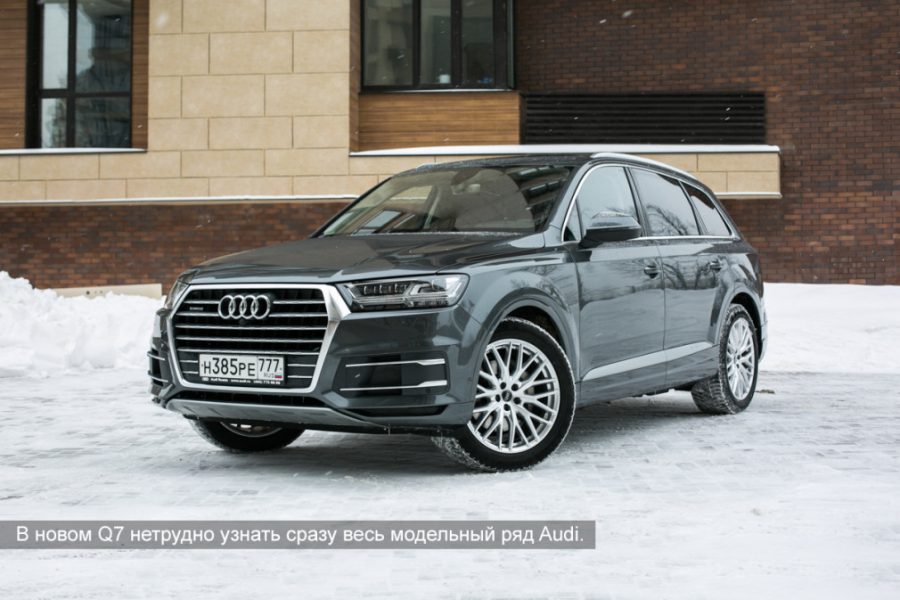
The Audi salon is more honest and seemingly more real. This is ultra-modern techno, to which the Q7 came in an evolutionary way, retaining everything that is familiar to the owners of any of the Audi models. Is that the L-shaped knob of the "automatic" lever knocks out of the general style, but in fact it turns out to be in place, as it serves as an excellent palm rest when operating the media system or setting the climate. Audi virtual instruments are familiar, contrasting and well-perceived. You won't be able to change the view, like on Volvo, but it is not required. The display sticking out on the console seems a little alien, but if you remove it, it turns out that there is something missing in the cabin again. Especially after the interior gadget XC90 with its "tablet".
From the Volvo driver's seat, the end of the cabin is almost invisible, and it is really very spacious behind the first row of seats. No matter how you move the parts of the passenger sofa back and forth, there will be plenty of space for both the knees and above the head. There is also a separate climate control unit, heated seats, curtains on the windows, and even 220-volt sockets. Plus two more quite decent places in the trunk, which can be easily removed to the floor if you do not need so many seats in the cabin. Above the folded chairs for luggage, 692 VDA-liters remain, and in the five-seater version there is still a good 30 liters.
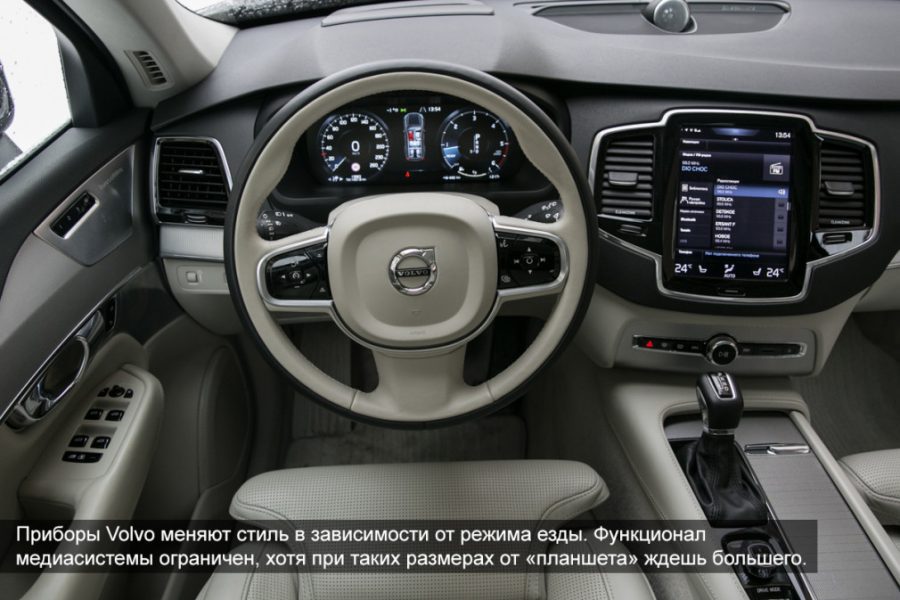
Audi offers even more: 890 liters of luggage space, shoulder room and a wide sofa. The second row is not as comfortable as in Volvo: there is a massive central tunnel, but there is so much room that three can sit without touching each other. Finishing materials are also of the highest grade, and in the list of options there is a set that is no worse than that of a competitor. But in Q7, you don't want to sit in the rear seats - the verified driver's toolkit beckons for the steering wheel, where the seat correctly distributes loads in German, and the side bolsters are adjustable not only at the back, but also at the pillow. And buttons with handles, whatever one may say, are still more convenient than the labyrinths of the menu of a touch-sensitive media system. It turned out to be easier to enter the address into the navigator in the classical way using the washer of the MMI system, and not the touch panel, which every now and then confused signs and Latin letters with Cyrillic ones. And even more so, you won't be able to do it on the go.
The ride of the new Q7 is excellent, even though there is a diesel under the hood. The V-shaped "six" develops quite civilian 249 hp, but generously distributes the moment from the lowest revs and pleases with pleasant traction. In urban conditions, the car's reactions to the accelerator seem calm and confident. But as soon as the engine is pissed off, the Q7 becomes very fast and responsive. The six-cylinder engine is very easy to accelerate, and the eight-speed automatic can afford to run smoothly even in the dynamic chassis variant. The solid murmur of the engine at high revs turns into an aggressive almost gasoline roar - you can't tell from the sound that there is a diesel engine. The diesel Q7 rides juicy and expensive, as befits a car of this class.
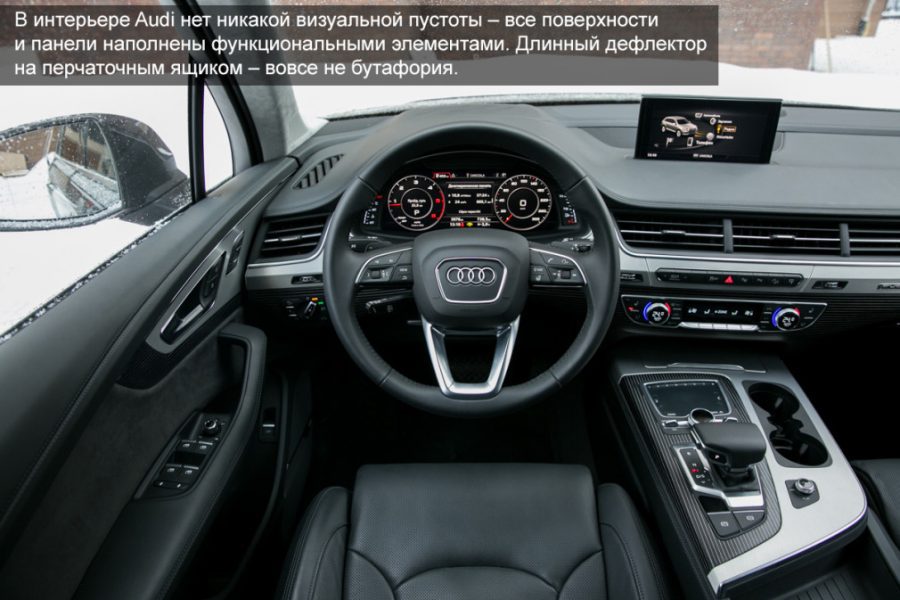
The Volvo XC90 has no "sixes" at all, and all engines are four-cylinder two-liter. And a diesel in the D5 version with 225 hp. its four cylinders work out in full. The Swedish crossover follows the gas pedal very sensitively even in comfortable chassis mode, and in dynamic mode it becomes very sharp, requiring careful handling of the accelerator. The automatic shifts eight gears quickly and imperceptibly, and in urban modes with traffic light starts and active lane changes, Volvo seems more dynamic than Audi's more relaxed reactions. Although the Q7 is faster in the limit, and when accelerating at track speeds, the XC90 begins to suffer from a lack of torque. In addition, the two-liter Volvo engine turns sour at high revs and does not sound as noble as the Audi "six".
However, the harsh nature of the diesel is a good fit for the new XC90, which has been taught to drive really fun. If the model of the previous generation was a lump on the move, now the crossover rolls very moderately, reliably writes the arcs of turns and pleases with intelligible feedback on the steering wheel. Of course, there is a framework for what is permissible, but they turn out to be far enough. And everything that goes beyond these limits is stopped by the electronics of the stabilization system. And just in time - in extreme modes, the reactions of the car become not so clear, and the suspension does not have time to work out all the irregularities. The dynamic suspension mode does not fundamentally change the picture - the crossover still stands confidently on the road, but it starts to react nervously to the accelerator, and too actively clamps the suspension, forcing the steering wheel to dance in the hands on bumps.
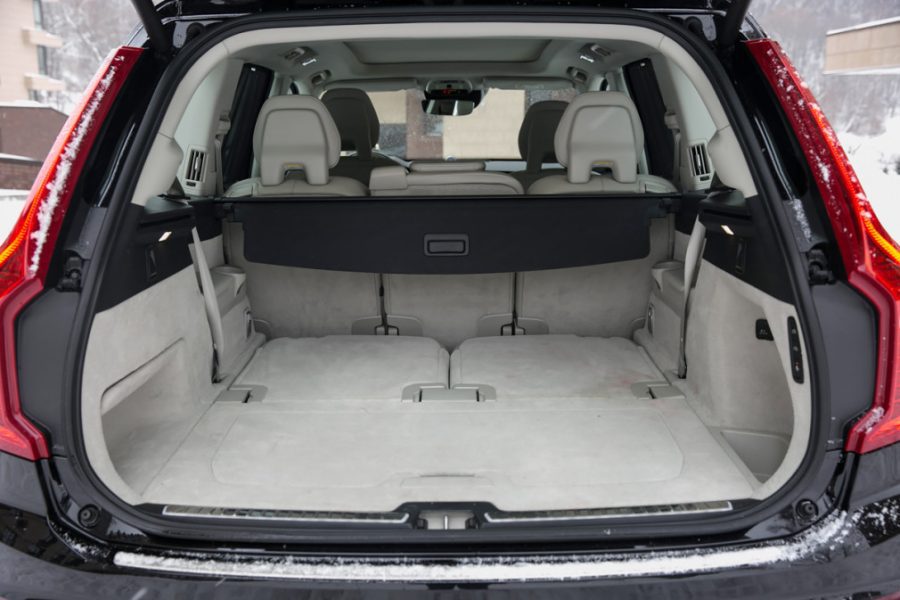
Chassis comfort is not Volvo's forte. It's fine on a good road, but noticeable potholes make the car wobble uncomfortably. Heavy wheels with a diameter of 21 inches deprive the suspension of the nobility that gives Audi passengers. The new Q7 is definitely one of the most comfortable cars of the brand. The suspension isolates passengers superbly from bumps, and even in dynamic mode, the chassis remains quite comfortable, although it begins to more carefully count the joints of the canvas with slaps of 20-inch tires. On the Audi, you can safely roll, almost without disassembling the road, or actively cut turns for your own pleasure. The steering remains informative even on a broken road, the suspension is collected, and the reactions are accurate. In turns, the force on the steering wheel logically increases, always leaving the driver with a clear feeling of the car.
Audi, even though it is five meters long and weighs two tons, feels like driving and driving almost like a passenger car. In part, this is also why you absolutely do not want to drag it off-road. Dirt doesn't suit him, and neither is the brutal XC90. And in terms of cross-country ability, both cars are uneven to classic SUVs like Toyota Land Cruiser 200. Their body geometry is lightweight, adjusted for the size and capabilities of air suspension, for which the owners are invited to pay at least $ 1. Volvo's cross-country ability is also limited by optional thresholds, which are of little use - getting up on them is uncomfortable, and even the pants get dirty. But if the owners decide to pay extra for the air suspension, then the Volvo owner will have a head start. The Swedish crossover can rise from 601 mm to 187 mm, and its ground clearance in standard mode is an impressive 267 mm. Audi hovers by default on cars 227 mm, although in the limit it is able to vary the ground clearance from 175 to 145 millimeters.
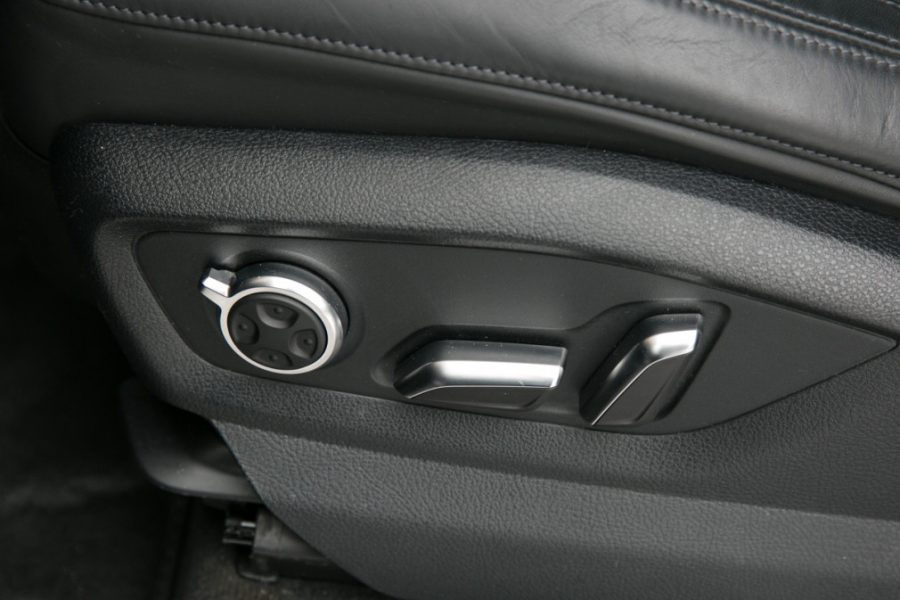
Another thing is that neither one nor the other has a real off-road transmission. The idea of seriously kneading the dirt is unlikely to occur to the owner of a premium crossover, so the designs are relatively simple. The Q7 is built on Volkswagen's MLB global longitudinal engine and offers Audi's traditional AWD with Torsen limited-slip differential and rear-axle torque distribution. The XC90, built on the SPA platform, has a transverse engine and the rear wheels are driven by a Haldex clutch that responds almost instantly. Both cars diligently mimic differential locks, but no one has a particular advantage in the off-road race. Suspension travels are small, there are no real differential locks. But both know how to helpfully squat down to load luggage and beautifully draw on the screens the diagram of the distribution of the moment between the wheels.
Considering the range of equipment that Volvo offers to XC90 buyers, as well as the quality of the finish and build, the price for the Swedish crossover seems perfectly adequate. But on the basis of sales results, Audi is ahead by several bodies: 1 Q227s sold in the first quarter versus 7 XC152s sold. But the feeling of the new XC90 is much more common on the roads. It seems like the eye is simply not clinging to the Q90, which looks like all Audi models at the same time. Not like the new XC7 with its brutal exterior and Thor hammers in the headlights. This means that the finest hour for the Volvo designers has already come. And the dealers - not yet.
